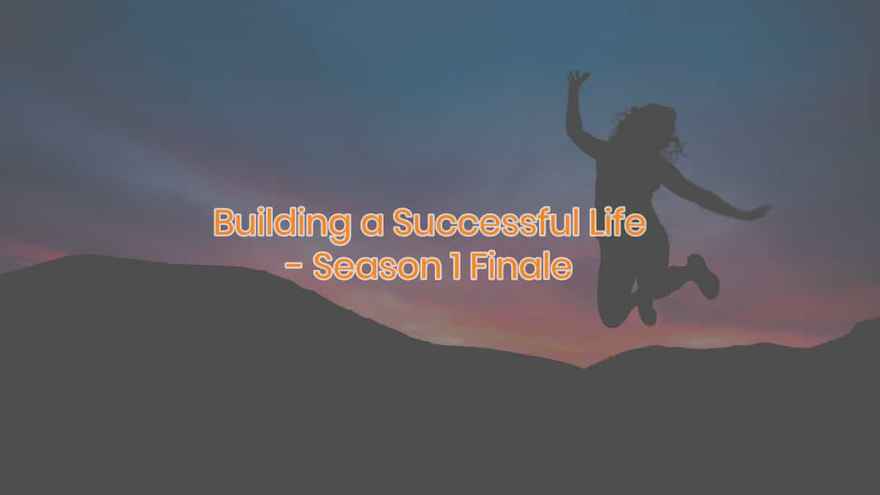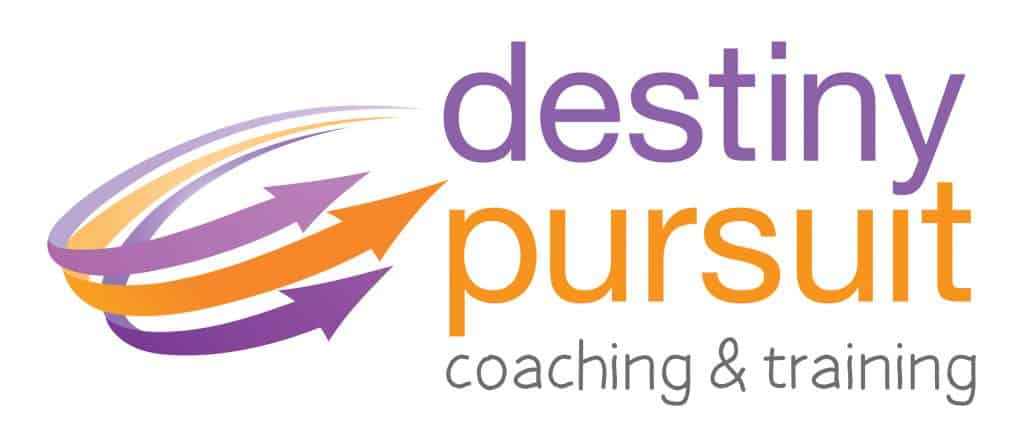Building a Successful Life - Season 1 Finale - NLP Matters, Episode #029

We have spent much of the past few months discussing and applying a number of NLP strategies to the setting of our goals using NLP techniques like the Be-Do-Have model, 6 Core Needs, the 5 Principles of Success, the Keys to An Achievable Outcome, and the Well-Formedness Conditions, with each strategy adding a new layer to the journey of Building our Successful Life and ensuring our goals are robust and resilient.
In this episode, we’ll draw all these threads together so we can see how unstoppable we can be when we bring them all into play.
Listen to the podcast to learn more.
Listen to the Podcast
Here are some key takeaways from this episode:
Most people understand that setting goals is a positive thing that can add value to our lives, and many of us have had the experience of achieving a goal we have set. And, whilst some people have achieved their goals, the success can often be more by accident or luck rather than by design. However using NLP means we tip the balance which means now we achieve success by design.
NLP has been developed modelling the techniques and strategies of successful people, people in many walks of life who have come up with strategies that have over and over proven that success is replicable and achievable when we follow the formulas that work. Using these proven NLP techniques and strategies will radically increase our success taking the luck and guesswork out of setting and achieving goals.
In this series of podcasts all of the models we have examined work together to help us design a life we love and achieve our dreams and goals.
The Be-Do-Have Model
- The Be-Do-Have Model is the core mindset of goal setting. Understanding the three key elements of Be-Do-Have and how they connect to each other gives us a key framework to build our success. When we truly get that DOING is only one part, it is just as important to know what we want to HAVE, as well as to BE the person we need to be, so that we are free to pursue our goals with passion and purpose, and certainty that only comes from having the full picture.
The Six Core Needs
- The Six Core Needs are needs that must be met. We will meet them in one of two ways, either resourcefully or unresourcefully, which gives us great insight into some of the primary motivations for either achieving or not achieving our goals.
- The Six Core Needs are Certainty, Uncertainty or Variety, Significance, Love and Connection, Contribution, and Growth. Being aware of which two or three of these needs are our own top-ranking ones, gives us a deeper perspective into the specific needs we will or will not meet as we set off in pursuit of our goal. Ideally, we will design our goal to ensure it satisfies some or all of our top core needs.
Five Success Principles
- The Five Success Principles, when taken together, can be seen as the “architecture” of setting goals. Like the architecture of a building, these are the broad strategies that will ensure the success of the project.
- The Five Success Principles- Knowing Your Outcome, Taking Action, Sensory Acuity, Behavioural Flexibility, and the Physiology and Psychology of Success, provide the general structure and context that ensures our success.
- The Five Success Principles provide the structure that others have used time and time again to achieve success, and we can be confident that employing them for our purpose will also bring us success with our goals.
- The Five Success Principles deliver us the structure of our thoughts and behaviour as we pursue our goals. They bring to the front of mind that even with the best-laid plans unless it is followed up with consistent, purposeful, and targeted action our goals will come to little. This focus helps us to consistently orient our thinking and behaviour towards delivering the outcome we have chosen.
- Taking action sensory acuity is critical to observe and tune our antenna into looking out for feedback that tells us we are getting closer or further away from our goal. Armed with that feedback, we must then have the behavioural flexibility to keep doing what is working and adjust what is not to ensure we correct and maintain our course.
- The Five Principles of Success are designed to ensure we will know when we stray from the path. It means we are constantly anticipating and responding early. It is this combination of sensory acuity and behavioural flexibility that will conserve lots of time (and money) as we continue our pursuit of success.
- Finally, the Physiology and Psychology of Excellence send a congruent message consciously and unconsciously to both ourselves and others that we are clearly focused on achieving our goals and that we are totally up for any challenges we may encounter along the way.
Keys to an Achievable Outcome
- The Keys to an Achievable Outcome is where we really get to test out our vision a bit more in the context of reality.
- The Keys to An Achievable Outcome enriches the Outcome we had previously designed by adding even more specifics. The application of the keys provides substance, bulk, and detail to our goal, so that it becomes so clear and present in our mind and the minds of others, that we can envisage it almost as if we are remembering a goal that has already been achieved but we position the goal in the present because we state/write our goal in the present tense, as if now.
- Expressing our goal in the present creates a sense of urgency. This tells our unconscious mind to focus on opportunities, actions, being, and doing things that will propel us towards our goal. Whilst adding the new details it is important we continue using a positive language frame which means we are really clear about what we DO want, rather than what we don’t want.
- As we specify the outcome in even more detail we are programming our unconscious mind so it knows exactly what detail to look for to support us on our journey. As we move through the keys and confirm our goal, and even with this additional detail added, we confirm that our outcome is still congruently desirable to us and it remains within our control. This means that we are even more certain that this is what we truly want and are committed to, and that we are the masters of our fate in achieving the outcome we have chosen.
- We then shift our focus onto the resources we need. This means that we know we have everything we need to achieve our goal. We also confirm the internal and external ecology of our goal, checking that we have accounted for the consequences of achieving the goal both for ourselves and for others. We make sure that even now, with more details, this goal really does align with our vision, our values our beliefs, and our actions within the external world.
Well-Formedness Conditions
- The Well-Formedness Conditions is the final checklist we use to ensure we haven’t missed anything and all is in readiness for us to launch into action. We add even more details and specifics as we evaluate how “well-formed” our goal is. We confirm decisions already made around the detail and make sure that they align with the original vision we had.
- If at this stage we discover an issue/problem, then we adjust our goal accordingly. We outline the steps we need to take and get really specific about the first step so that when we do launch into a fully considered and purposeful action. We make sure there is more than one way to achieve our outcome to reassure our unconscious mind that no matter what happens we’ve got this.
- Finally, we check that our goal will give us increased choice. We know with great certainty that there is so much in this goal for us that of course, we are going to just go for it.
So there we have it - the complete set of strategies that will support us in bringing our dreams into reality! We now have the very cool and comprehensive NLP toolbox for goal setting that contains the Be-Do-Have model and the Six Core Needs, the architecture and the blueprint of the Five Success Principles, the detailed planning of the Keys to an Achievable Outcome and the final detailed specification and checklist of the Well Formedness Conditions, to see us through.
I encourage you to grab a goal, maybe something that you have been thinking about for a while and download the free e-book I have prepared for you from the button below. This book outlines all the cool NLP tools and strategies we have looked at in these episodes. So, download the e-book and take them out for a test drive as you really go for your goal and watch the magic happen! Design your destiny as you set off in pursuit of your goal setting adventure!
Download "Building Your Successful Life" e-book
In our next episode, we’ll begin a new season of the NLP Matters podcasts, where we break out the compass for NLP as we explore the NLP Presuppositions that guide us as we use and apply powerful NLP techniques to take control of our own lives and really make a difference.
Listen to the Podcast
Joanne Clark
Joanne Clark is an Internationally accredited Master Trainer of NLP who has been delivering NLP training since 2011. Being on her feet in front of training rooms is where Jo loves to be and her passion for inclusive and immersive training that delivers outstanding learning outcomes is apparent to everyone in her training rooms. On average Jo delivers 140 days of training per year in addition to online webinars, guest speaker events and group coaching.
“NLP is at the core of all my training and coaching, it is at the core of who I am, how I interact and connect with people. I am absolutely passionate about spreading the NLP tools across the planet as I endeavour to support Robert Dilts’s vision of Creating a world to which people want to belong.” Joanne Clark
Certified Master Trainer of NLP; Master Practitioner NLP, Hypnotherapy & Matrix Therapies; Performance Coach; Cert IV Coaching; Advanced Practitioner in Coaching; Cert IV in Business; BA(Hons); Majors in Sociology and Psychology; Parent Education Leadership Training (PELT) Certificate; Mother of four children; Private Pilot (PPL); Diploma in Life Coaching


0 comments
Leave a comment
Please log in or register to post a comment